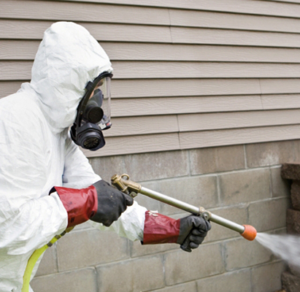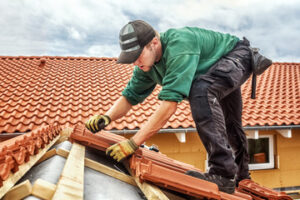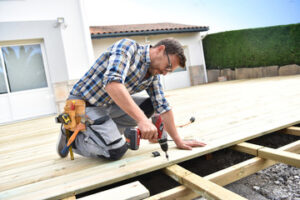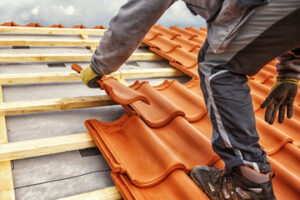Estate Sales Springfield, MO are held to liquidate the belongings of a deceased loved one. They also happen when someone wants to declutter before moving or make extra cash.
Estate sales are similar to garage or yard sales, but everything has a price tag. Most of the time, a company oversees the event and helps with marketing, which is important for attracting buyers.

Estate sales are popular ways for people to get rid of unwanted items and turn them into cash. The profits from the sale may be used to pay off debts, cover living expenses, or even be invested for future use by heirs. However, planning and organizing an estate sale can be a daunting task, especially during an emotionally difficult time. Often, these sales are staged following the death of a loved one, which can arouse a variety of emotions.
Typically, an estate sale involves the liquidation of personal belongings from a private home or business. Estate sale companies play a critical role in this process, and they offer many benefits. Their services include appraising items for value, organizing and displaying them for sale, and pricing them based on their market value. In addition, they can assist in marketing and managing the day-of-sale activities.
The first step in organizing an estate sale is creating an inventory of the items to be sold. This can be done by walking through each room and space of the house or business and recording the item’s condition. It is also helpful to categorize items into groups such as furniture, kitchenware, artwork and collectibles. This will help you better manage the sale and make it easier for shoppers to find what they are looking for.
Once the inventory is complete, it’s a good idea to schedule your estate sale for a weekend, ideally when the majority of buyers will be available. You should also promote your sale through a variety of methods, including online advertising. This will attract a larger crowd of potential buyers, which can lead to higher sales and a better overall outcome.
Before hiring an estate sale company, you should research their credentials and customer reviews. It is also a good idea to visit an estate sale that the company is conducting and observe how it is run. You can also ask the company to provide references from previous clients. It is important to choose a professional, knowledgeable and experienced estate sale company. In addition, it’s a good idea to sign a written contract with the company, which should outline everything from their fees to their commission rates.
Finding an estate sale
Estate sales can be a useful way to liquidate the contents of a home or other property. They are often associated with a loved one’s death, but can also be used by people who want to downsize or move in a hurry. Unlike a garage or yard sale, an estate sale usually involves the entire house and is held on site. It is a good idea to hire a professional company to help you organize and run the sale. This will save you time and money. The company will assess, though not appraise, the items for sale and will display them in a manner that will attract buyers. It will also market the sale through street signs and online advertising. It will also dispose of any unsold items.
An estate sale is different from an auction or a yard sale in that it is typically organized by a company and prices are set based on their value. This makes it a convenient and popular way for families to sell their belongings. It may include furniture, clothing, appliances, and even vehicles. In addition to the items in the home, estate sales may also include valuables, such as artwork, jewelry, coins, and antiques.
A successful estate sale can take a lot of work. It is important to have a clear plan, including what you intend to do with any leftover items. This will help you avoid any legal complications and ensure that your sale is as successful as possible. You should also consider hiring extra help if you think that you will need it.
Many companies specialize in estate sales and offer a full range of services, from organizing to marketing. Some will even stage a home through interior decoration and organization to make it more appealing to shoppers. They can also research high-ticket items, such as art and jewelry, to get the best price.
When choosing an estate sale company, be sure to interview the company thoroughly and ask for references. You should also visit their past sales to see how they are organized and what the pricing is like. You should also ask the company about its process of negotiating and ensuring a fair price.
Advertising an estate sale
An estate sale is the liquidation of personal property and possessions, usually after a death or as part of a downsizing process. It is held in the home of the deceased or their heirs and allows the public to view items for sale at their convenience. Estate sales typically offer a wide variety of items, from household goods to antiques, as well as collectibles and other valuables.
An important aspect of estate sales is the need to advertise them. This can be done online, through flyers or local newspapers. Detailed descriptions of the items for sale and high-quality photographs are essential to attract shoppers. It is also important to organize the house in an aesthetic and practical way for the sale. Clear price tags and uncluttered walking paths can make it easier for shoppers to find what they are looking for.
Many estate sale companies specialize in organizing and staging sales, transforming homes into retail-like environments that are appealing to buyers. They can also assist with cleaning and organizing the contents of the home and handling post-sale cleanup and item disposal. When choosing an estate sale company, consider their fees, reputation in the market, and range of services offered.
It is also important to check local laws regarding estate sales. Some states require that you collect and remit taxes for estate sales, while others exempt them. Additionally, there may be zoning restrictions or rules set by the homeowner’s association that will affect the location of an estate sale.
The timing of an estate sale is also important. The best time is in the winter, when fewer families are on vacation and there is less competition from antiques dealers and resellers. In addition, people tend to suffer from cabin fever in the winter and are more willing to shop for bargains.
When advertising an estate sale, be sure to include the name of the heirs and a clear description of what is being sold. It is also a good idea to provide a numbering system so that shoppers can track their purchases. This will reduce chaos and prevent the loss of items. Also, be sure to have enough staff on hand to handle the crowds and answer questions.
Hosting an estate sale
Whether you’re moving from a home or cleaning out the belongings of a deceased loved one, an estate sale can be an efficient and convenient way to sell items. However, the process requires careful planning and execution to ensure a smooth operation. To start, make an inventory of the items to be sold and their condition. This will help you price items accurately and organize the sale more efficiently. It’s also important to promote the event and take security precautions.
An estate sale begins with a morning setup where estate sale professionals arrange items for optimal visibility. This is a critical step because the presentation of items can have a significant impact on how quickly and for how much they sell. For this reason, many companies offer estate sale staging services to make the sale more appealing to shoppers. This includes arranging items in ways that are more visually appealing and utilizing a system for tracking inventory.
To promote the estate sale, you’ll want to use social media and Craigslist to post your announcement. Using photos of standout items is also an excellent strategy for drawing attention to your sale. In addition, you’ll need to post signs in prominent places around the neighborhood a few days ahead of time. These should include the date, time, and location of the sale.
During the estate sale, you’ll need to be on your toes and keep an eye on the shoppers to prevent theft. You’ll also need to restrict access to non-sale areas and use caution signs to warn buyers of slippery surfaces or steps. You should also be prepared to accept multiple methods of payment, including cash and credit cards.
It’s also a good idea to hire several people to help during the sale. These people can monitor rooms, entrances and exits and answer questions from shoppers. They can also assist with transactions and maintain a friendly demeanor that helps to minimize crowd control issues. They can also remove items that aren’t for sale from the property and dispose of them accordingly. They may even be able to negotiate prices with potential buyers as the sale progresses.








